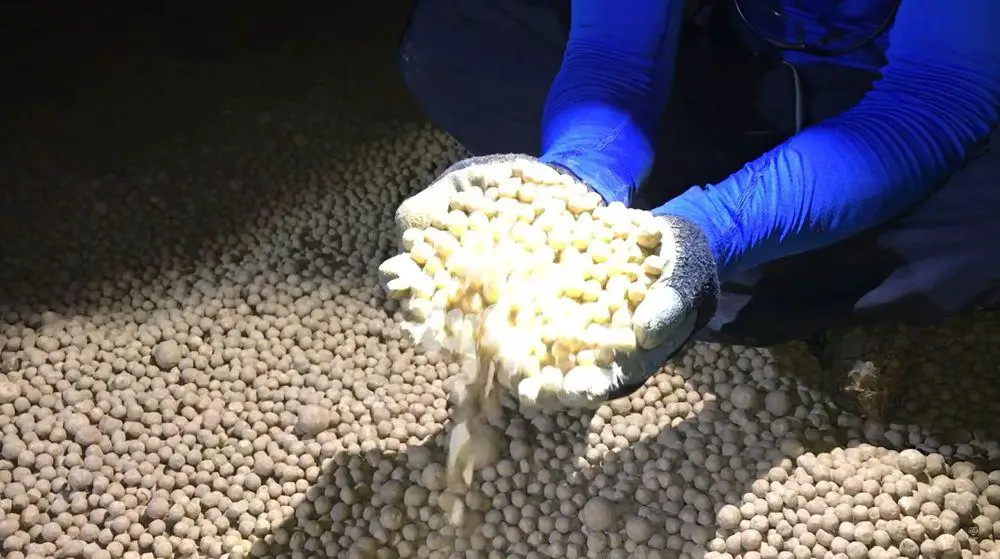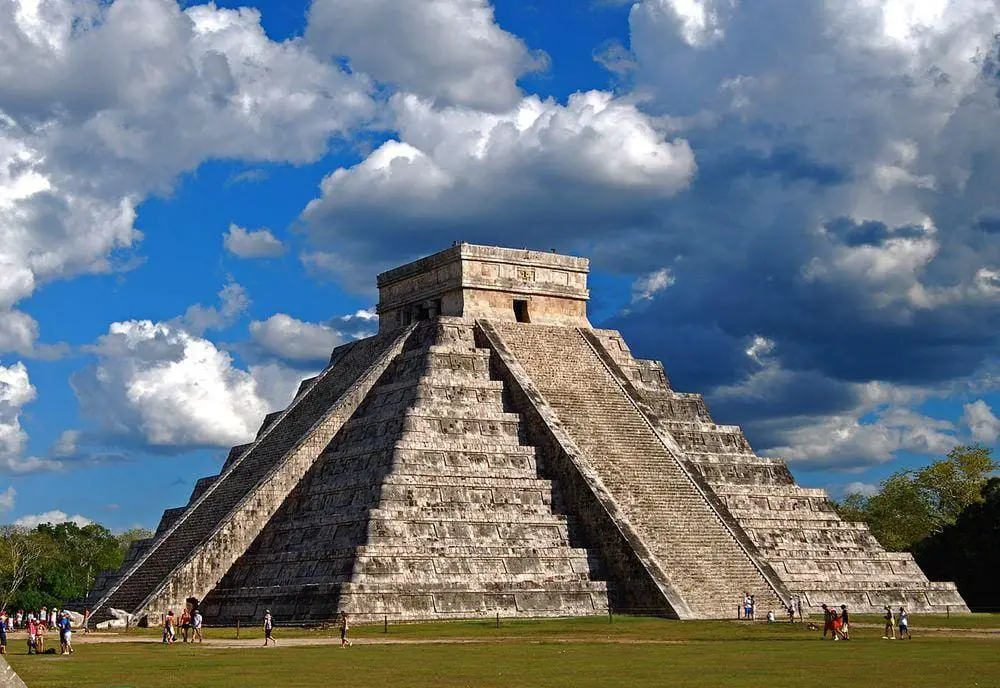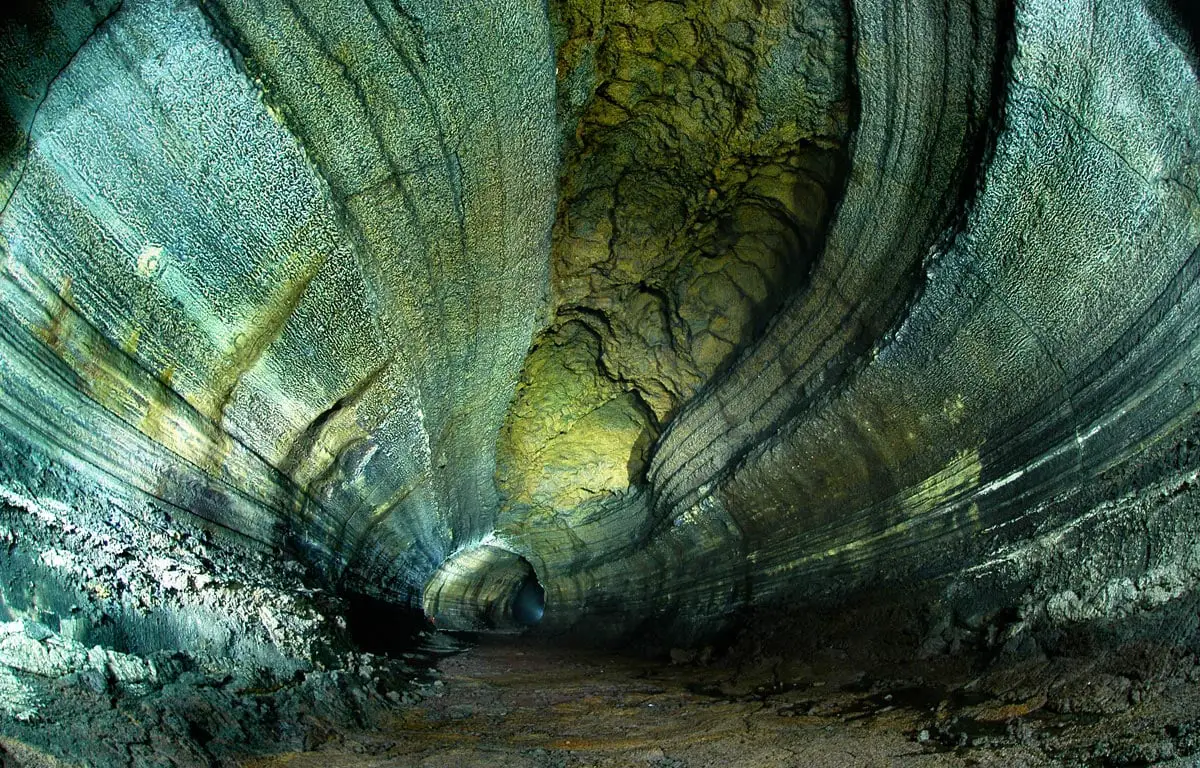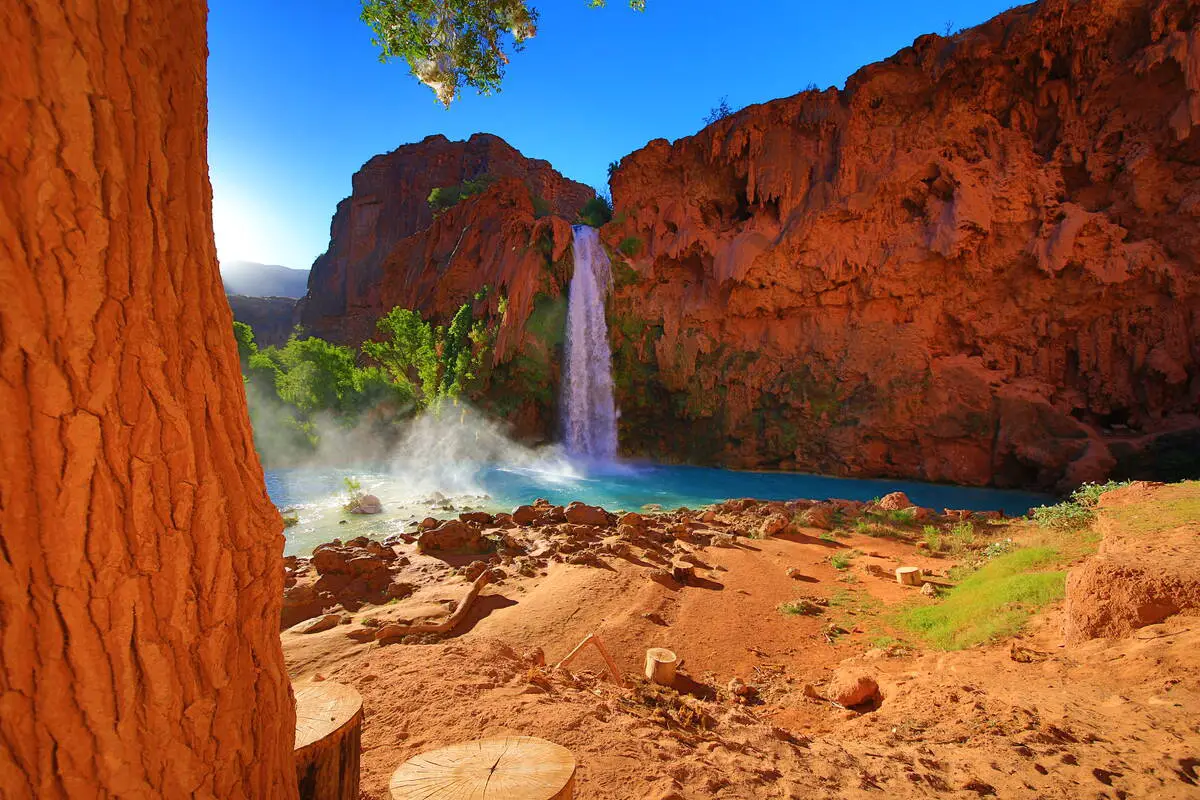World 🢖 North America 🢖 Mexico 🢖 Tabasco
Caves 🢔 Geological wonders 🢔 Categories of wonders
Wonder
Gruta de las Canicas

 In short
In short
The floor of Gruta de las Canicas is covered with some 200 millions of cave pearls – sparkling white or with a marble texture.
 46.3%
46.3%
GPS coordinates
Location, address
Length
Map of the site
If you see this after your page is loaded completely, leafletJS files are missing.
 In detail
In detail
This 529 m long cave formed in Cretaceous carbonates with entrances at both ends. Next to it, almost connected is another, larger cave – the 784 m long Gruta de los Mayas.
Cave of the Marbles (if translated to English) has several passages. In some places are quite impressive stalactites and other cave formations. The most impressive feature, though, is the incredible amount of cave pearls. The main cave room is some 8 by 6 m large and is fully covered with these pearls. The layer of pearls here is more than 1 m thick.
Individual pearls are some 1 – 1.5 cm large, but some are larger. Pearls are formed from concentric layers of calcite. The mechanism behind the formation of such a tremendous amount of cave pearls is not clear.
References
- HOUSTON, Shari, MOZLEY, Peter S., CAMPBELL, Andrew R., and BOSTON, Penny. Petrology and Chemistry of Cave Pearls from Gruta De Las Canicas (Cave of the Marbles), Tabasco, Mexico. 2008 Joint Meeting of The Geological Society of America, Soil Science Society of America, American Society of Agronomy, Crop Science Society of America, Gulf Coast Association of Geological Societies with the Gulf Coast Section of SEPM. Geological Society of America Abstracts with Programs, Vol. 40, No. 6, p. 479.
- La Gruta de las Canicas al sur de Tabasco. México Desconocido, 26.July 2010.
- Gruta de los Mayas, Gruta de las Canicasx. Ejiodo Profesor Arcadio Zentella, Mpo. Teapa Tabasco AMCS Activities Newsletter no. 25, p. 36, 2002.
 Linked articles
Linked articles

Wonders of Mexico
Few countries in the world can offer such an array of unique and astounding attractions as Mexico.
The area of this country was the cradle of several highly developed indigenous civilizations and some regions in the country are dotted with remnants of ancient cities with temples, palaces, and pyramids.

Caves
Every year there are reported exciting discoveries of new caves and discoveries of new qualities such as cave paintings in the ones known before. But there still is a feeling that our knowledge covers just a small part of all these monuments of nature.
Though, those which are known to us, offer a surprising diversity of unusual features and impressive sights.

Wonders of North America
North America is a very diverse continent that extends from the northernmost land of the world to the moist tropical wilderness of Darien Gap. The most amazing wonders of North America are the prehistoric monuments of Mesoamerica, the geysers of Yellowstone, and colonial architecture.
 Recommended books
Recommended books
The Devil’s Book of Culture
In this highly original ethnography, Benjamin Feinberg investigates how different understandings of Mazatec identity and culture emerge through talk that circulates within and among various groups. These groups include Mazatec-speaking businessmen, curers, peasants, intellectuals, anthropologists, bureaucrats, cavers, and mushroom-seeking tourists.

